Law & Politics
A Trump Win Could Reshape the Cultural Sector. How Is the Art World Preparing?
In a second term, the president might cut arts funding and hamper diversity efforts, but his actual plans remain vague.
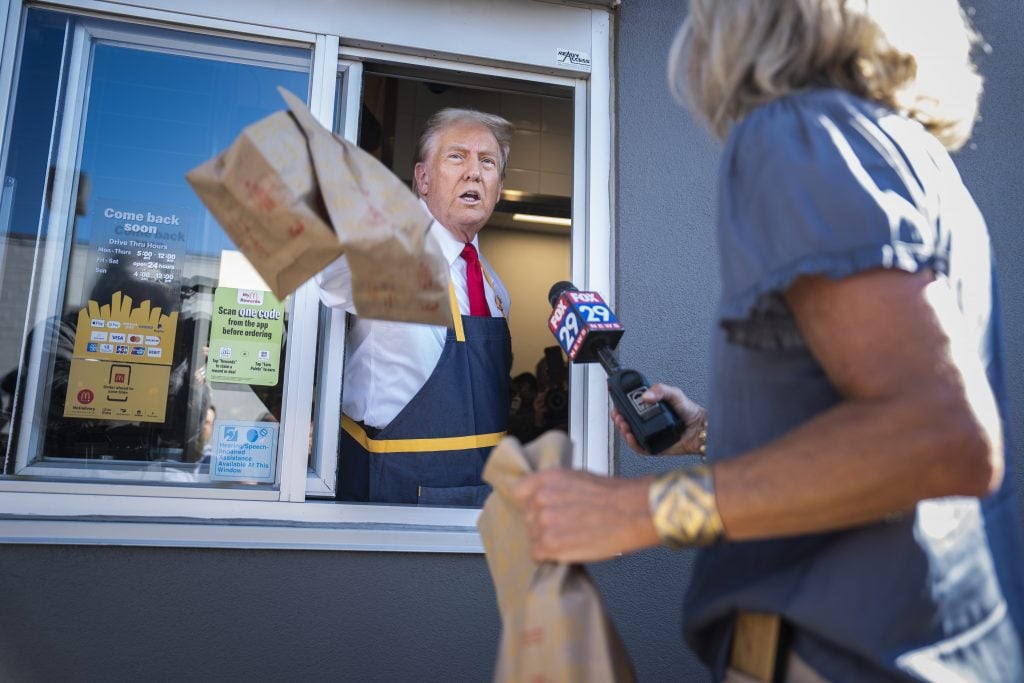
In a second term, the president might cut arts funding and hamper diversity efforts, but his actual plans remain vague.

Brian Boucher

When Donald Trump won the U.S. presidential election in 2016, many in the art world were taken by surprise. Trump had talked little about the cultural sector during the campaign, but his administration would have profound effects on it. Right after assuming office, he placed a ban on visitors from a number of majority-Muslim countries that blocked entry for artists in every discipline and drew strenuous protests from U.S. artists, museums, and other culture workers. Later, he pursued attempts to eliminate federal culture funding. Anti-Trump art and demonstrations proliferated.
Less than a month out from the next election, polls suggest that the race between Trump and Vice President Kamala Harris is tied. Art types are doing many of the same things they did eight years ago—and four years ago. Star artists from Jeff Koons to Amy Sherald and Hank Willis Thomas donated works to help fund pro-Harris efforts, and artist Brian Andrew Whiteley’s Trump tombstone has come out of storage.
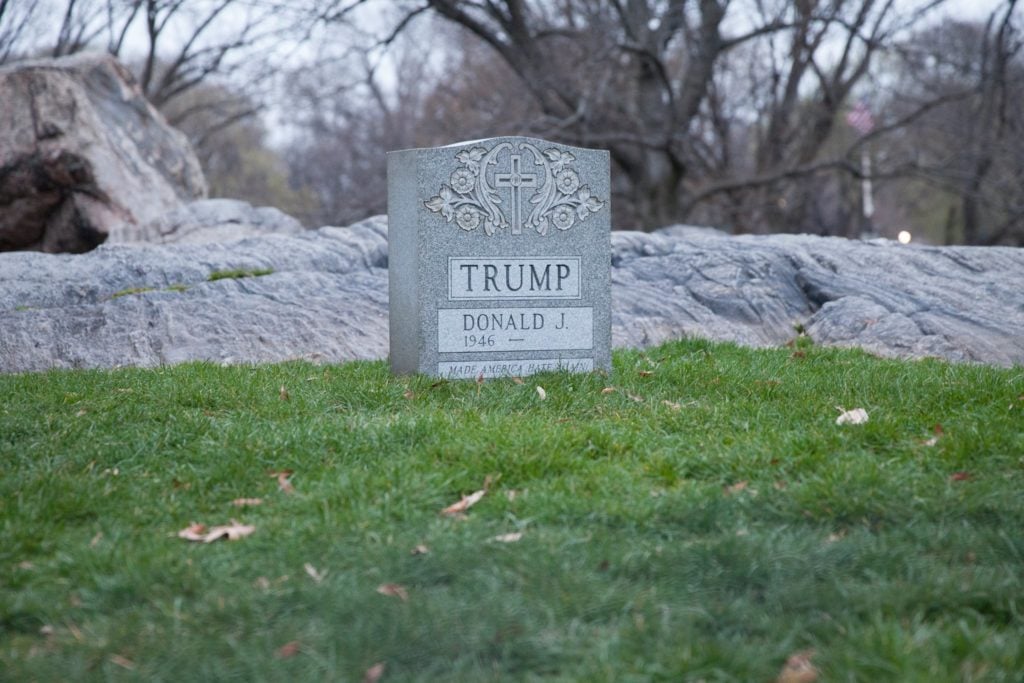
Brian Andrew Whiteley’s Donald Trump Tombstone. Photo by Ventiko. Courtesy of Christopher Stout Gallery.
How will the arts be affected if Trump wins? Given the former television star’s wildly unpredictable nature, it is hard to know exactly what to expect. The Republican Party’s official platform has no mention of culture, nor does Project 2025, a Trump administration wishlist put together by the Heritage Foundation, a right-wing think tank. The Trump campaign’s press office did not respond to a request for comment.
However, a few lessons can be gleaned from the past. Alongside the travel ban (which he has promised to revive in a second term) and proposals to cut arts funding, Trump signed a 2020 resolution to make federal buildings beautiful (read: conservative) again, and he has a long history of being hostile to the arts. When he razed the luxury department store Bonwit Teller to erect Trump Tower in Manhattan, he needlessly trashed valuable sculptures.
Are the art world’s various powers players—museum directors, auction house executives, collectors, dealers, and artists—ready for a second Trump term? Can they take action now to mitigate its potentially serious consequences? Calling around, I found that many people were not eager to discuss the matter on the record, which is perhaps not surprising. But some people were willing to chat.
Museums: Emotional Tolls, Fiscal Crosshairs
The federal Institute of Museum and Library Services estimated in 2014 that there were upward of 35,000 museums nationwide. For many of their employees, a Trump win would be traumatizing.
“It is generally true that our staff will have very specific views about this election,” one museum director told me. “The employee side would be the thing most difficult to navigate.”
A former curator agreed. “The emotional impact on the workplace is real, and so much of the emotional caregiving in the field is being done by women,” this curator said. “I suspect a Trump administration would see more turnover among women in the field. We saw that in the Great Resignation. So many women working in corporate jobs were burnt out, partly from so much emotional caregiving in the workplace. It’s a lot.”
Other concerns include cuts to federal funding and censorship.
Many institutions draw support from IMLS as well as from the National Endowment of the Arts and the National Endowment for the Humanities, which could be on the chopping block once again.
Though Trump has not, so far, telegraphed a desire to defund those organizations, one state may prove to be, as the saying goes, a laboratory of democracy. In Florida, Governor Ron De Santis, a failed Trump rival, recently zeroed out $32 million in arts funding for next year.
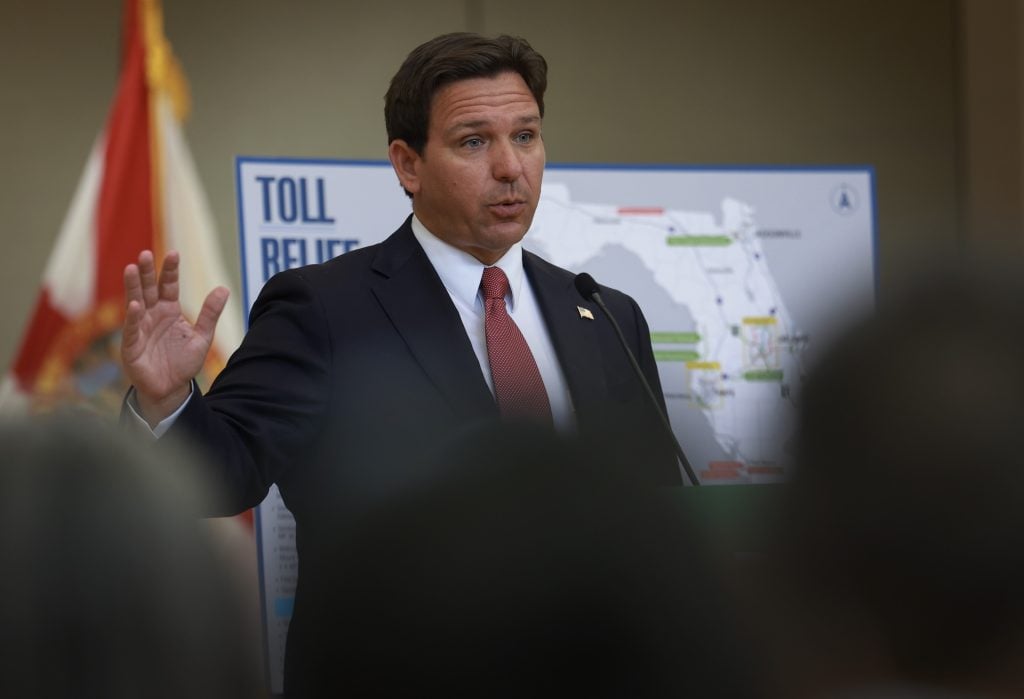
Florida Governor Ron DeSantis at a press conference in Miami. Photo: Joe Raedle/Getty Images.
Private sources of funding may not be able to cover a drop in government support. As it is, experts in philanthropy say that traditional museum funding models are breaking down. “What is going to spur next-gen donating?” asked Melissa Cowley Wolf, of MCW Projects, an advisory firm specializing in philanthropic strategy and organizational wellness. “The younger population is not seeing art’s value in society, particularly as a driver of social, racial, and climate justice.”
In 2018, Cowley Wolf co-founded a group called the Arts Funders Forum to address how the cultural sphere can ensure its future. “There’s a real impetus to develop new models, even more so now with the threat of the abolition of federal funding,” she said.
Even if federal funding isn’t eliminated, a conservative administration could direct support toward projects it deems patriotic or family-friendly.
“In the ‘90s, in the wake of the Robert Mapplethorpe controversy, we saw the introduction of a decency amendment,” said Maxwell Anderson, a former director of five North American museums, including the Whitney Museum of American Art and the Dallas Museum of Art. “A Trump administration would seem likely to introduce similar language affecting grant recipients.”
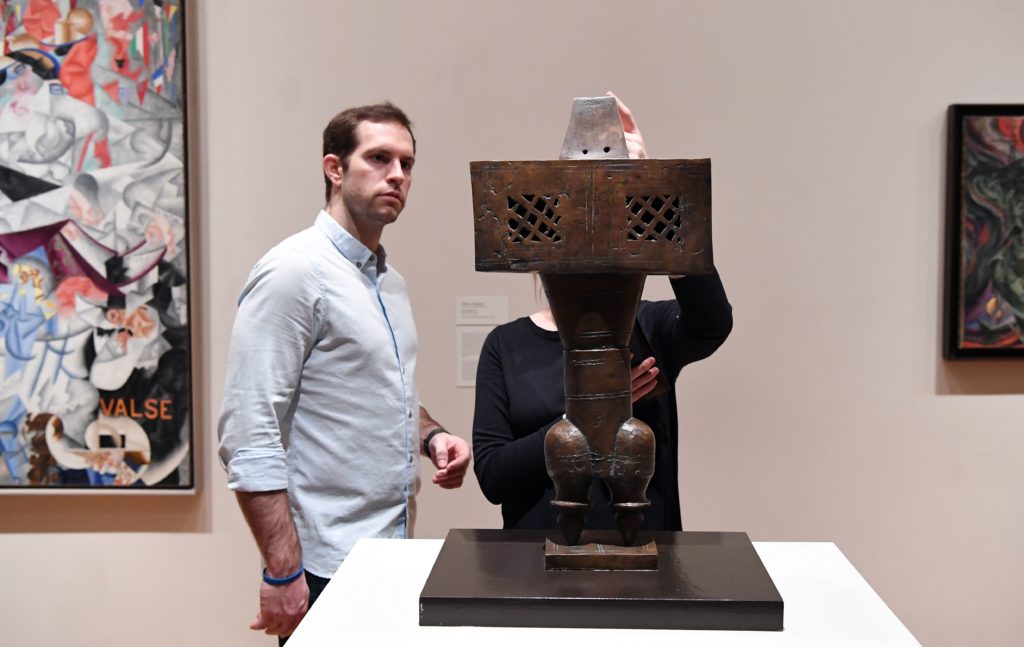
A couple looks at an artwork by Parviz Tanavoli, The Prophet (1964), at the Museum of Modern Art, one of the works the museum put on view by artists hailing from countries affected by Trump’s travel ban. Photo: Angela Weiss/AFP/Getty Images.
Some museums spoke out in the wake of Trump’s election with symbolic gestures, such as when New York’s Museum of Modern Art placed on view works by artists hailing from the countries affected by the travel ban. Would they step up again, in an even more charged environment?
Experts say that there’s already self-censorship afoot.
“The sense I’m getting is that, especially among the more established organizations, there is an enormous amount of fear,” a former museum director told me. “The war in Gaza, and now Lebanon, and attendant protests, have resulted in an atmosphere of censorship and self-censorship. Unless a political statement comes from an artist’s project, I just don’t see many institutions having the appetite for it.”
Experts also said that they fear federal-level curbs on free speech.
“Project 2025 proposes censorship in the classroom and elsewhere of speech on subjects like race and systemic oppression,” Anderson said. “This would extend far beyond the classroom to federal institutions like the Smithsonian and grant-making entities that have fostered language on those subjects.”
Museums might fear more than censorship or funding cuts. Trump has taken TV shows like Saturday Night Live to task for one-sidedness, classing their gags as illegal campaign contributions and asking whether the Department of Justice should prosecute them. Could museums, artists, or writers who criticize him also be targeted by a Trump-controlled bureaucracy?
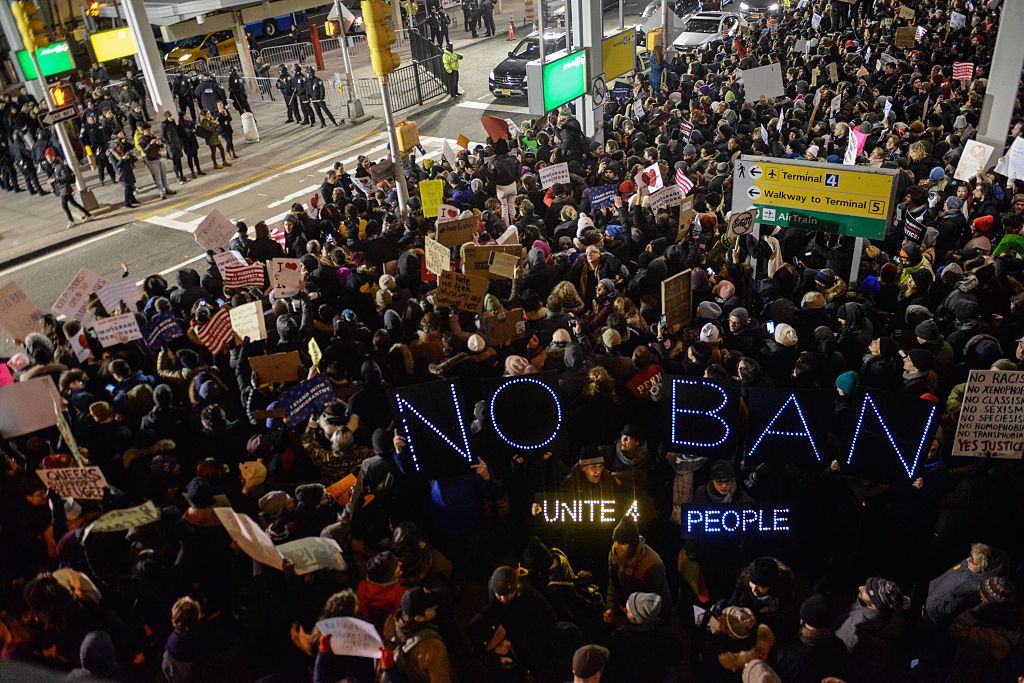
Protestors rally during a demonstration against Trump’s Muslim travel ban at John F. Kennedy International Airport on January 28, 2017 in New York. Photo: Stephanie Keith/Getty Images.
Andras Szanto, a museum consultant, predicted that, under a second Trump administration, “We would be in for an extraordinary period of political turmoil in the ranks of artists and the people who frequent museums,” he said. “I think the museum would be a site of expression of discontent and of political activism. The museum has already become a place of political protest, as one of the last remaining truly public venues.”
Museums could definitely come under fire for speaking out, Szanto said, but he wondered if they could proactively form a kind of mutual defense pact.
“Could there be a NATO attitude among museums, where an attack on one is an attack against all?” he asked. “Could museums be a bit more like PEN,” the association of writers, “where they have plans to make a united stand against attacks?”
But museums may feel pressure from both sides of the aisle.
“Museums are now facing challenges on two fronts,” Anderson said, referring to “progressives calling out ‘toxic’ philanthropy and, more recently, perceived insensitivity toward the plight of oppressed people, and donors who feel unfairly singled out for the origins of their wealth.”
For fear of drawing right-wing ire, museums might also go mum on a recent focus: making progress on diversity, equity and inclusion in their exhibitions and collection as well as their staffing and board makeup.
“From conversations with others in the field,” the former curator said, “I have the sense that they would not be able to talk openly anymore about their DEI efforts.”
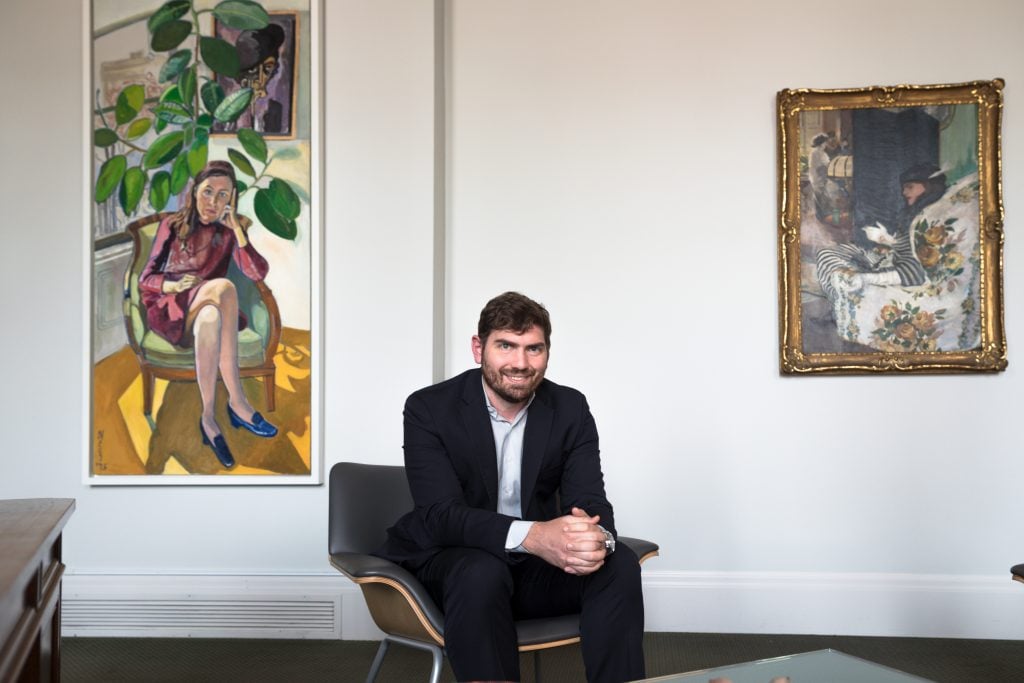
Adam Levine in his office. Courtesy of the Toledo Museum of Art.
Amid the gloom, one museum director who serves a politically diverse audience voiced a degree of optimism.
“Our audience is made up of one-third Republicans, one-third Democrats, and one-third Independents,” said Adam Levine, the director of the Toledo Museum of Art in Ohio. “We’ve found that the number one thing our visitors want, regardless of political persuasion, is to be challenged. Having worked other places, I do not believe Toledo is unique. Surveys consistently indicate that museums and libraries are the most trusted institutions in America.”
“We are not perfect and are doing our best to interrogate tough questions and bring people along,” Levine added, “but that is exactly what we think society needs right now: An earnest effort to bring us together.”
Art Schools, the Department of Education, and International Exchange
There are more than 300 accredited art schools in the U.S., according to the National Association of Schools of Art and Design, and government data indicates that some 150,000 visual and performing arts degrees were awarded in 2022. Trump policies on higher education could have profound effects in this realm as well, especially if they affect international moves by students.
Data supplied by the Association of Independent Colleges of Art and Design is revealing. Across its 36 member schools, which include the Pratt Institute and the Rhode Island School of Design, international students accounted for 46 percent of total graduate-level enrollment last academic year, an all-time high; AICAD’s international undergraduate enrollment last academic year was 20 percent, a stable percentage over the past 10 years, according to the organization’s president and executive director, Deborah Obalil.
Trump has pledged to dismantle the Department of Education, but that would be a tall order, requiring the cooperation of Congress, a “highly unlikely proposition” according to experts speaking to the New York Times.

A class from the School of the Art Institute of Chicago. Courtesy of the Art Institute of Chicago.
However, should that effort succeed, it could harm art schools, many of which have been under financial strain, with two shuttering recently in San Francisco and Philadelphia. Around 70 percent of the DOE’s $224 billion annual budget goes to higher education via the federal student aid program, which provides $90 billion in loans to new students annually as well as $39 billion in Pell Grants to low-income students.
It is perhaps more likely that Trump would reverse some key higher education regulations. These could include Title IX, which bars sex discrimination in higher education, and Title VI, which prohibits discrimination based on race, color, or national origin. New federal guidelines strengthening protections for transgender students under the Biden Administration were put on hold by the Supreme Court in August. Trump would likely try to overturn the Biden Administration guidance.
Artists and Their Advocates
Some people I spoke to simply did not want to think the unthinkable, insisting that there’s no chance Trump will win. (Some even suggested that this article should not be written.)
Artist Steve Lambert, the artistic director and co-founder of the New York nonprofit Center for Artistic Activism, pushed back in an interview on the very concept of planning for another Trump term. “Preparing for failure is not a great place to start,” he said.
But lawyers who serve artists are taking some very concrete measures.
Another Trump term would mean another busy four years for the New York nonprofit Artistic Freedom Initiative (AFI), which facilitates free legal representation and resettlement assistance in the U.S. for international artists who are at risk at home of censorship, imprisonment, and worse.
A second Trump term “could throw artists’ visa applications into chaos and confusion, which is what we saw happen during his previous administration,” Ashley Tucker, AFI’s co-executive director, said. “We anticipate needing to provide additional support for at-risk artists who are still outside the U.S. but whose immigration process is already underway, and for at-risk artists who have already reached the U.S. and have a temporary legal status that could ultimately be jeopardized by a new Trump administration. We’re working to expand our network of pro bono lawyers to meet increased needs from at-risk artists both in and outside of the U.S.”
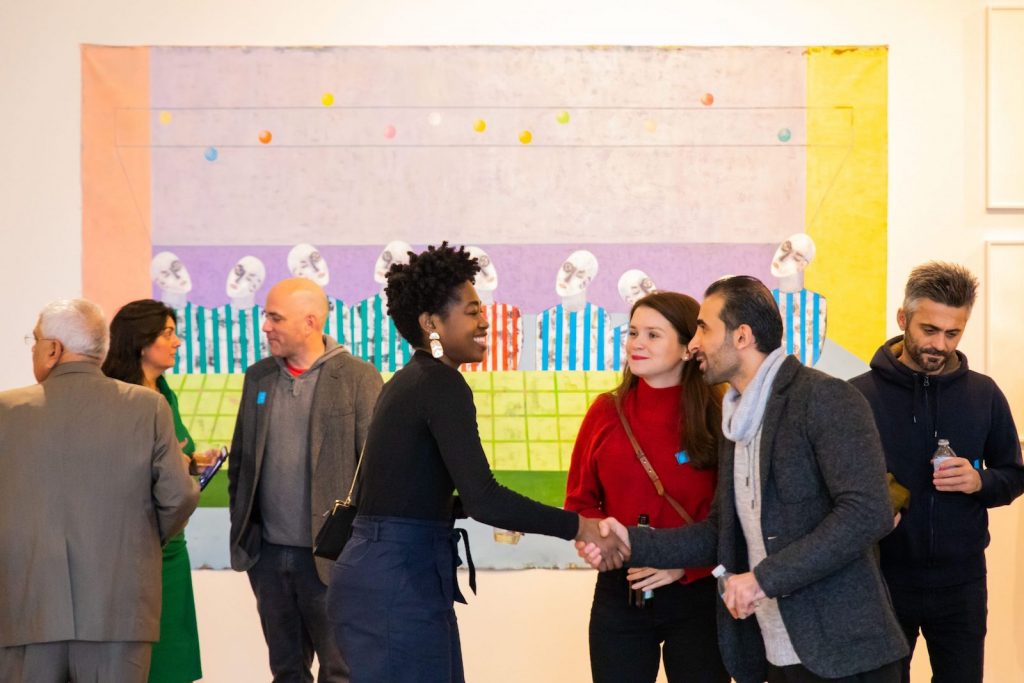
Artist Rashwan Abdelbaki greets a guest at the Queens Museum in December 2018 during the exhibition “Executive (Dis)Order: Art, Displacement, and the Ban,” organized by the Artistic Freedom Initiative. Photo Michael Wilson, courtesy Artistic Freedom Initiative.
The organization also offers assistance to artists who have had to move abruptly to a new country, possibly arriving traumatized and with no network to support them. “We saw last time how Trump’s presidency impacted artists who were already here in so many ways,” Tucker said. “We made an intentional effort to help build a stronger community among the artists, because we saw such despair and confusion. We want to build a greater structure for peer-to-peer communication and care so that they have greater personal networks.”
The nonprofit also organized public events and the 2018–19 exhibition “Executive (Dis)Order: Art, Displacement, & the Ban” at the Queens Museum in New York, which showcased work by at-risk artists who were directly impacted by Trump’s travel ban. AFI would “certainly” plan to do the same under a second Republican administration, Tucker said.
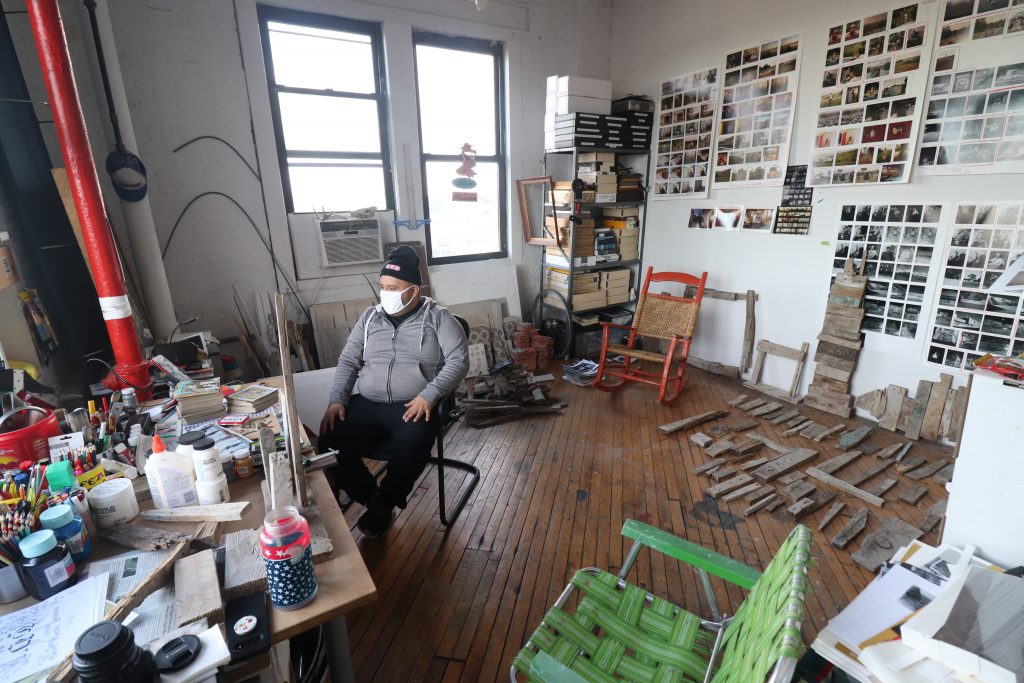
Daniel Ramos in his studio at the International Studio and Curatorial Program in Brooklyn. Photo Andrew Kim, courtesy ISCP.
International travel for artists, including those awarded residencies in the U.S., would be top of mind for the administrators of programs like the International Studio and Curatorial Program in New York, which hosts residencies for artists and curators from abroad in its 35 studios.
“At ISCP, we’re deeply committed to the role of art as an essential and sometimes urgent form of cultural diplomacy, and we serve artists from more than 100 countries,” its executive director, Susan Hapgood, said. “While it’s obvious which one of the U.S. presidential candidates better aligns with the missions of arts organizations like ours, we do not feel threatened and are prepared for either outcome. As always, we will continue to be an institution that celebrates and defends diverse perspectives and lived experiences.”
The Market: Buffeted by Tariffs But All Clear at Auction?
One of Trump’s go-to answers to questions about how he will build the U.S. economy is that he will impose tariffs on goods coming from foreign countries. In 2018, when the administration proposed to target Chinese art and antiquities with a 25-percent import tariff, dealers and experts lined up to brand the move as “stupid,” “counterproductive,” “senseless,” and “detrimental.” A lobbying attempt to remove cultural artifacts from the list was successful, but the following year, art was added back to the list.
The U.S. art market made up some 42 percent of a global $65 billion art market in 2023, according to the annual Art Basel and UBS Global Art Market Report. Trump’s policies could affect the market dramatically.
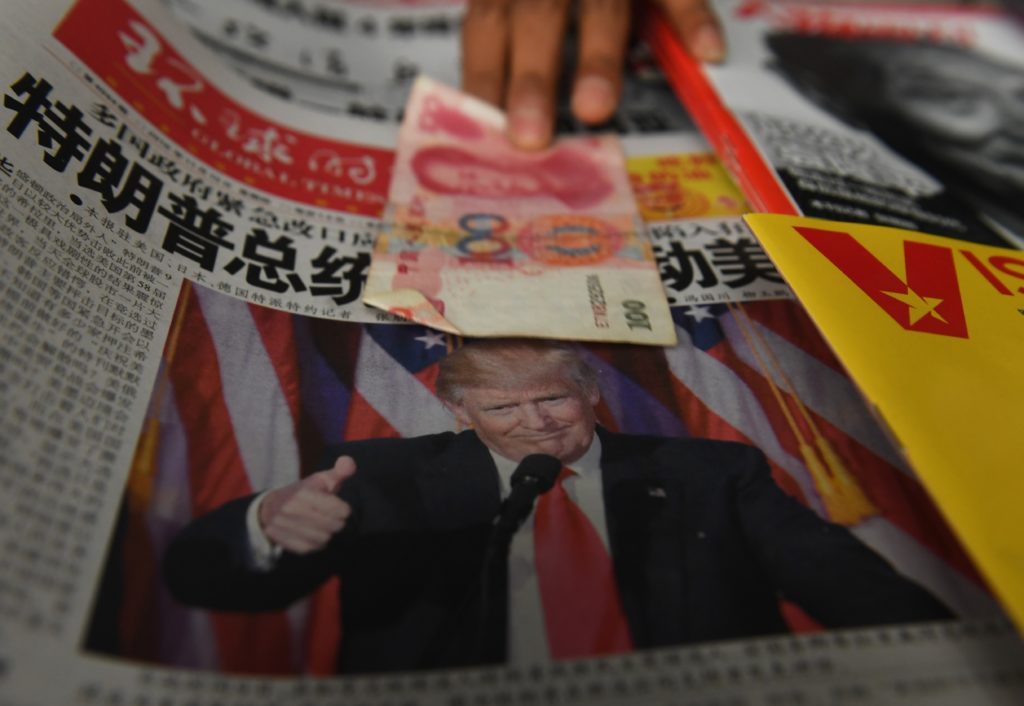
A vendor picks up a 100 yuan note at a news stand in Beijing. Photo: Greg Baker/AFP/Getty Images.
There could be modifications to other regulations that affect the art market, said one expert with experience as a director at several art galleries, recalling that the 2018 Tax Cuts and Jobs Act eliminated a tax loophole for art collectors, a move Trump framed as part of efforts to balance the budget. According to guidelines covering “like kind” exchanges, the so-called Section 1031 rules previously allowed collectors to defer capital gains on proceeds from art sales if they invested the money into something of like kind, namely artworks.
While there is an economic-justice argument against this loophole (which remains in effect for real estate, a field beloved by Trump), its elimination did harm the secondary market in the view of the expert.
But not everyone in the market felt that Trump’s presidency was damaging. A New York dealer, speaking anonymously, said that as much as he and his colleagues felt “broken and lost” after Election Day 2016, his gallery sold five works the next day and 10 by the end of the week, to clients like an advisor, a collector, and a museum trustee. “That was eye-opening for sure!” the dealer said.
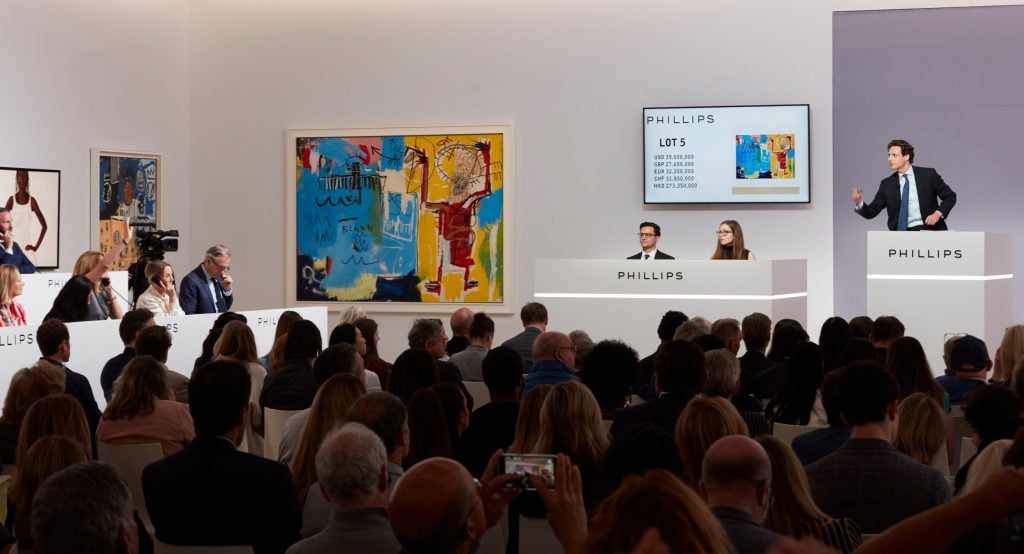
The salesroom during a Phillips evening sale of Modern and contemporary art in New York earlier this year. Courtesy of Phillips
Businesses like Christie’s, Phillips, and Sotheby’s are less likely to be affected by Trump actions, according to one advisor with auction house experience. This person pointed out that, historically, the marquee November auctions in election years have not been affected by the political turmoil. “Regardless of the circumstances,” they said, “I’ve never known a collector to hesitate to buy an artwork they really want—whether a Republican or Democrat!”
However, this expert had other concerns.
“I worry about democracy,” the advisor said, “but I’m not so sure I’m worried about how the auctions are going to go.”